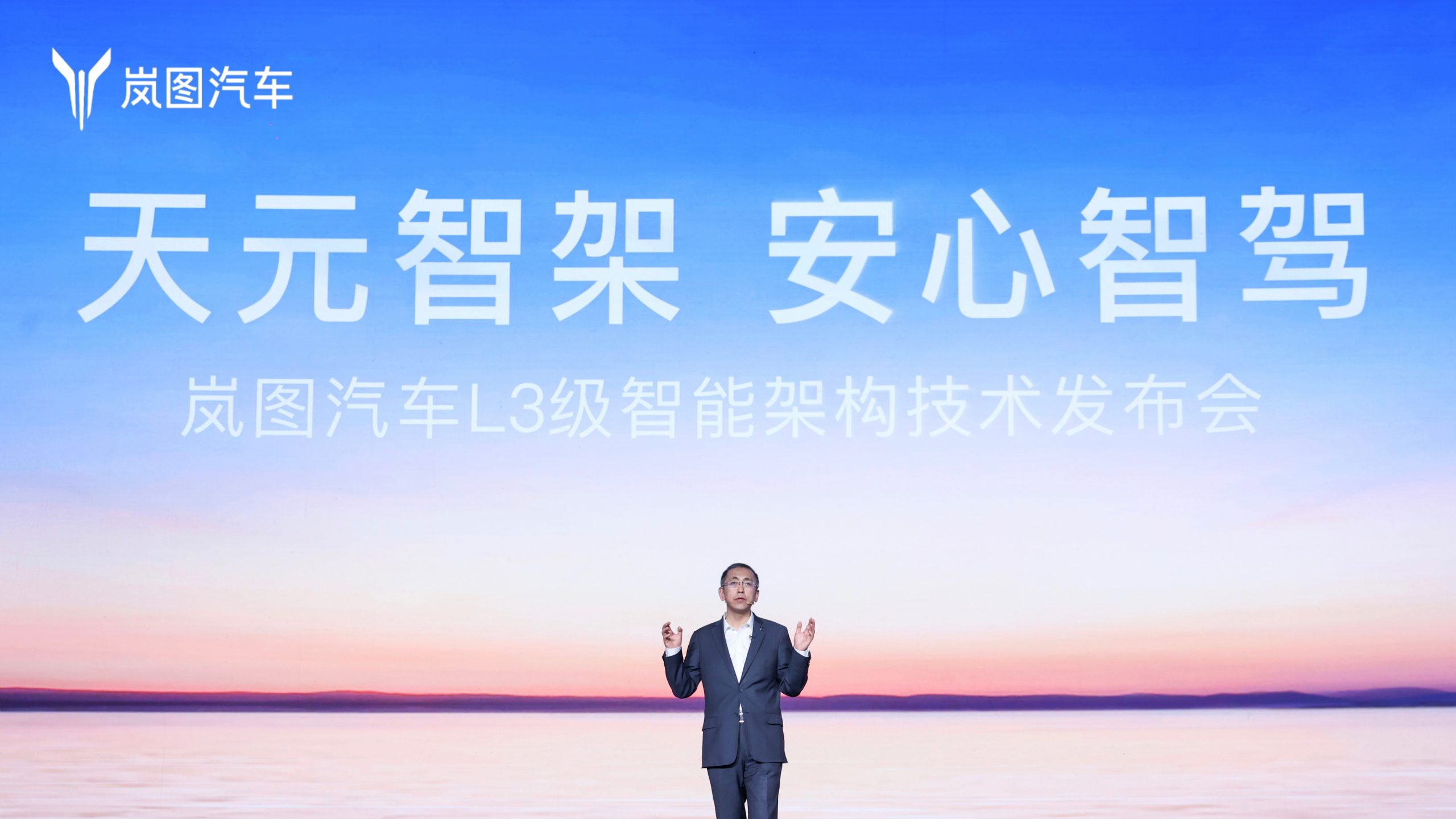
Currently, China’s autonomous driving regulations are not yet fully established, and the criteria and restrictions for L3 are somewhat ambiguous. However, in the realm of L3-assisted driving in China, there’s now an additional national team competitor joining the discussion.
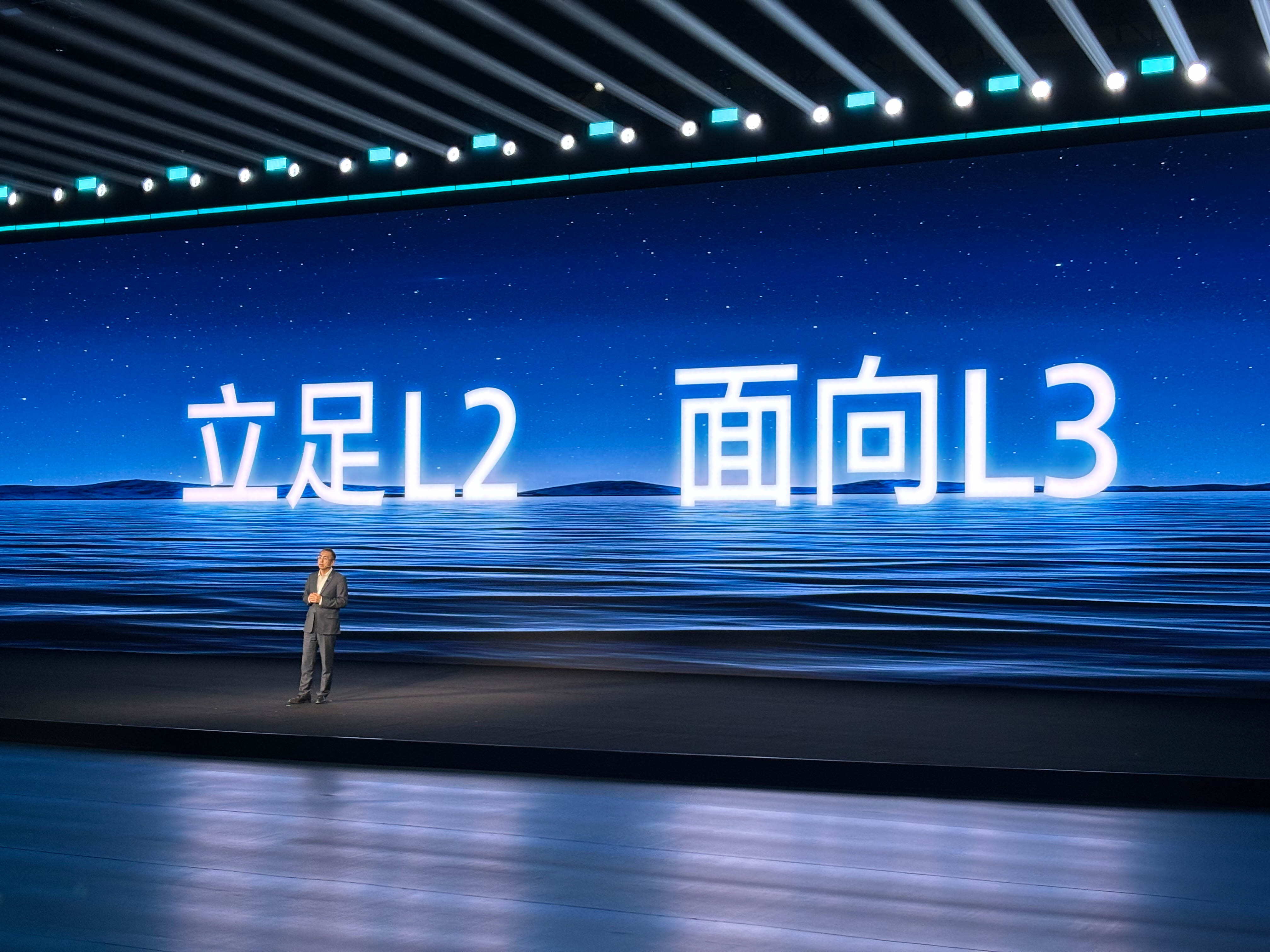
On April 16, 2025, VOYAH held a technical release conference for their L3 intelligent architecture, unveiling their L3-level intelligent architecture—Tianyuan Intelligence Architecture.
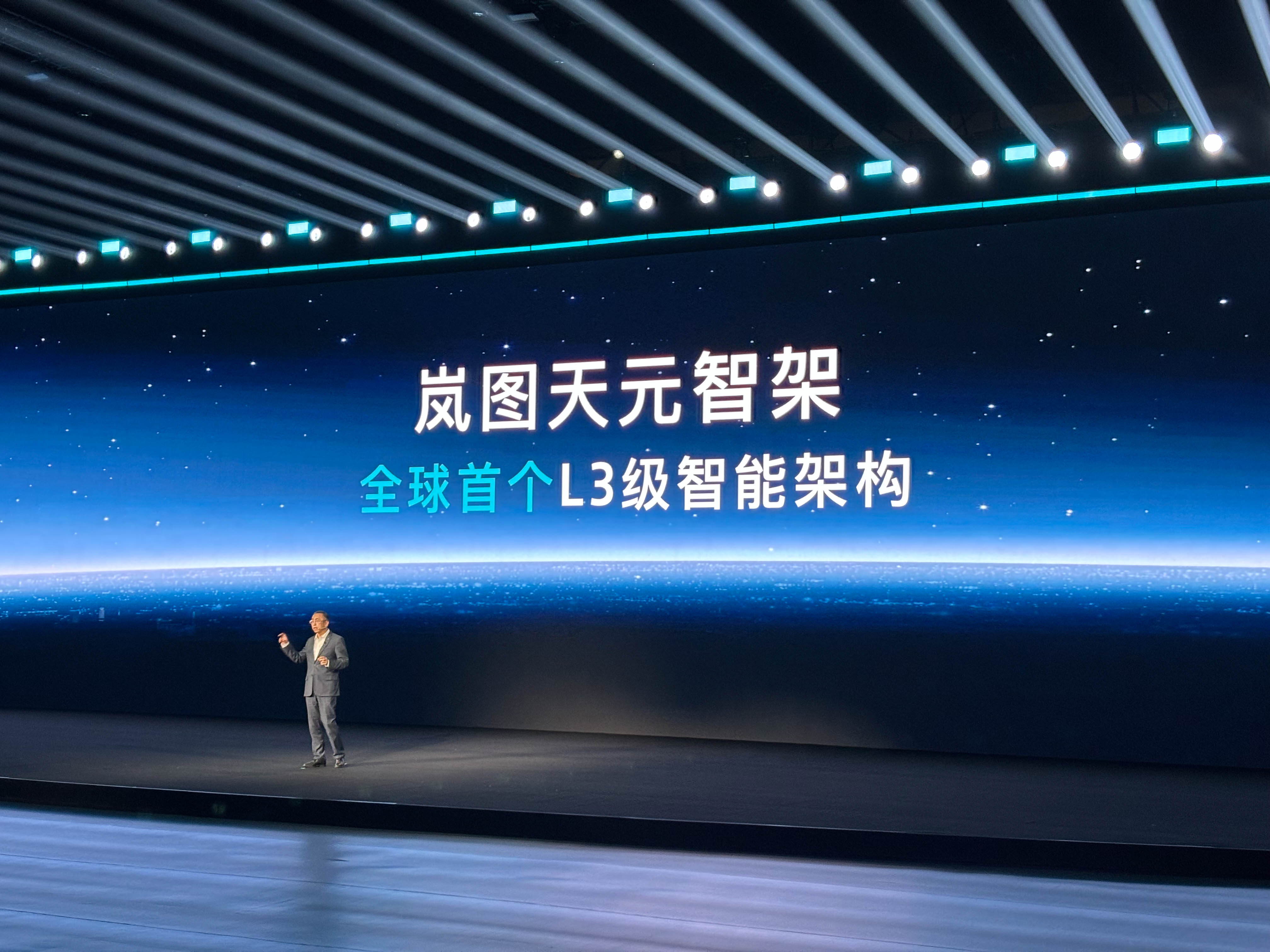
At the conference, VOYAH focused on the Qingyun L3 Intelligent Safety Driving Platform and Kunpeng L3 Intelligent Safety Driving System, advancing this L3 technology architecture from both hardware and software perspectives.
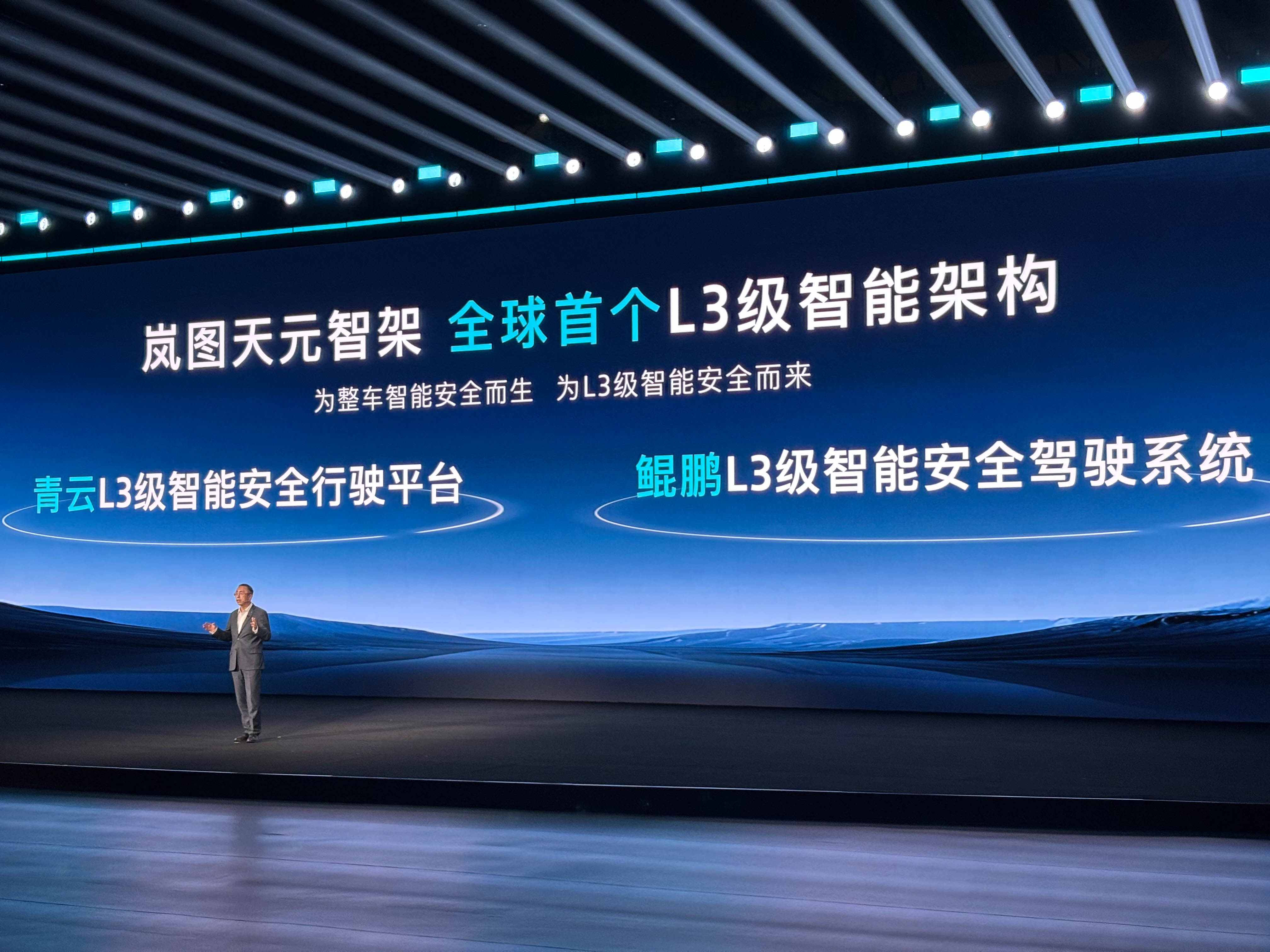
What’s the Connection Between Motors, Steering, and L3?
Under the Tianyuan Intelligence Architecture, the first segment is the Qingyun Platform, which VOYAH describes as an L3 Intelligent Safety Driving Platform. This includes technologies such as axial flux motors, steer-by-wire, brake-by-wire, rear-wheel steering, and fully active suspension.
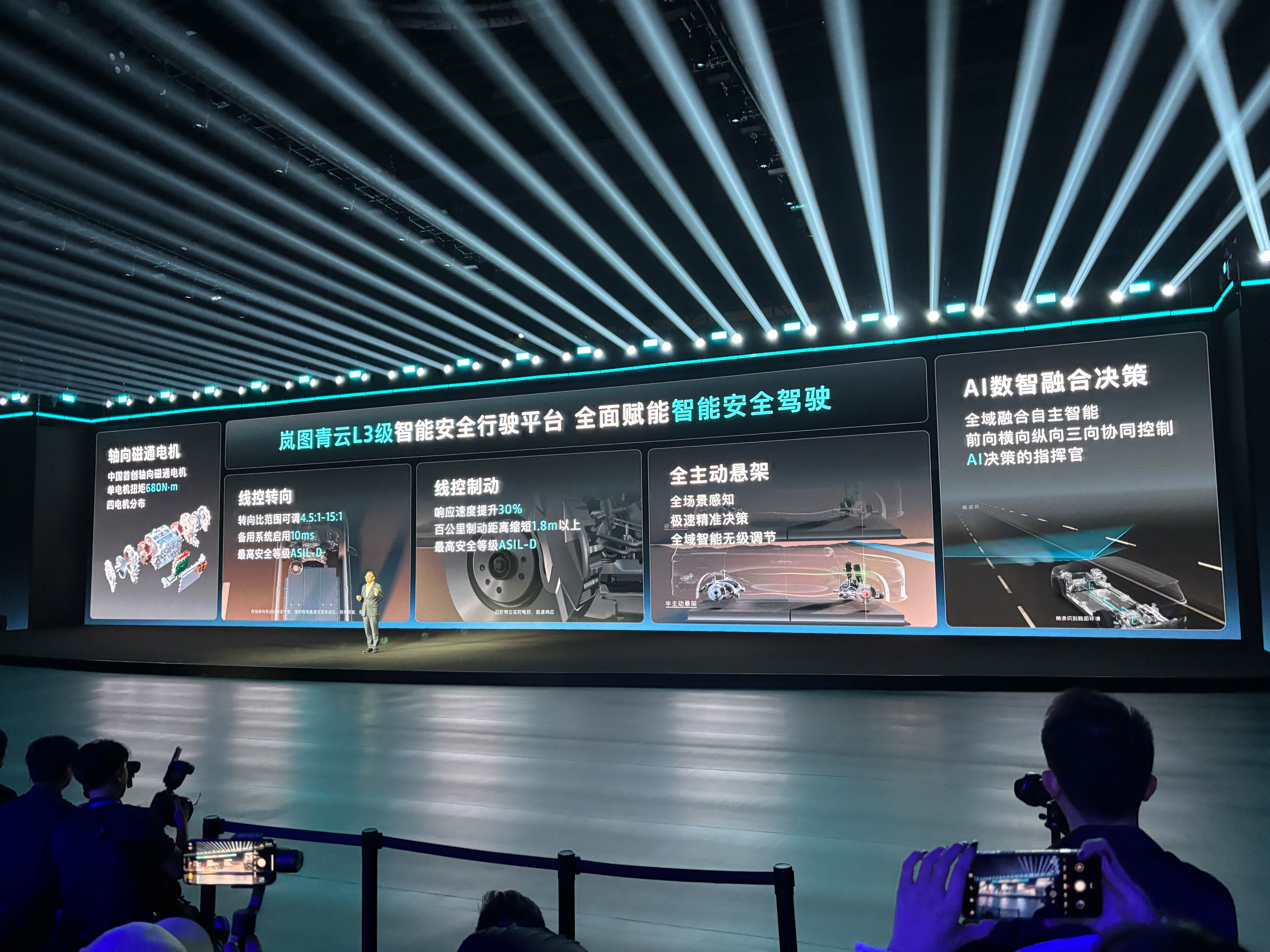
Regarding axial flux motors, they are still relatively uncharted in the passenger vehicle sector. On the Qingyun Platform, VOYAH introduces axial flux motors, achieving a peak single motor torque of 680 N·m. VOYAH employs a distributed four-motor drive method that allows an MPV to effortlessly handle a 60% slope. In the demonstration video at the conference, it showcased capabilities on par with top-tier off-road SUVs like the Mercedes G-Class and U8.
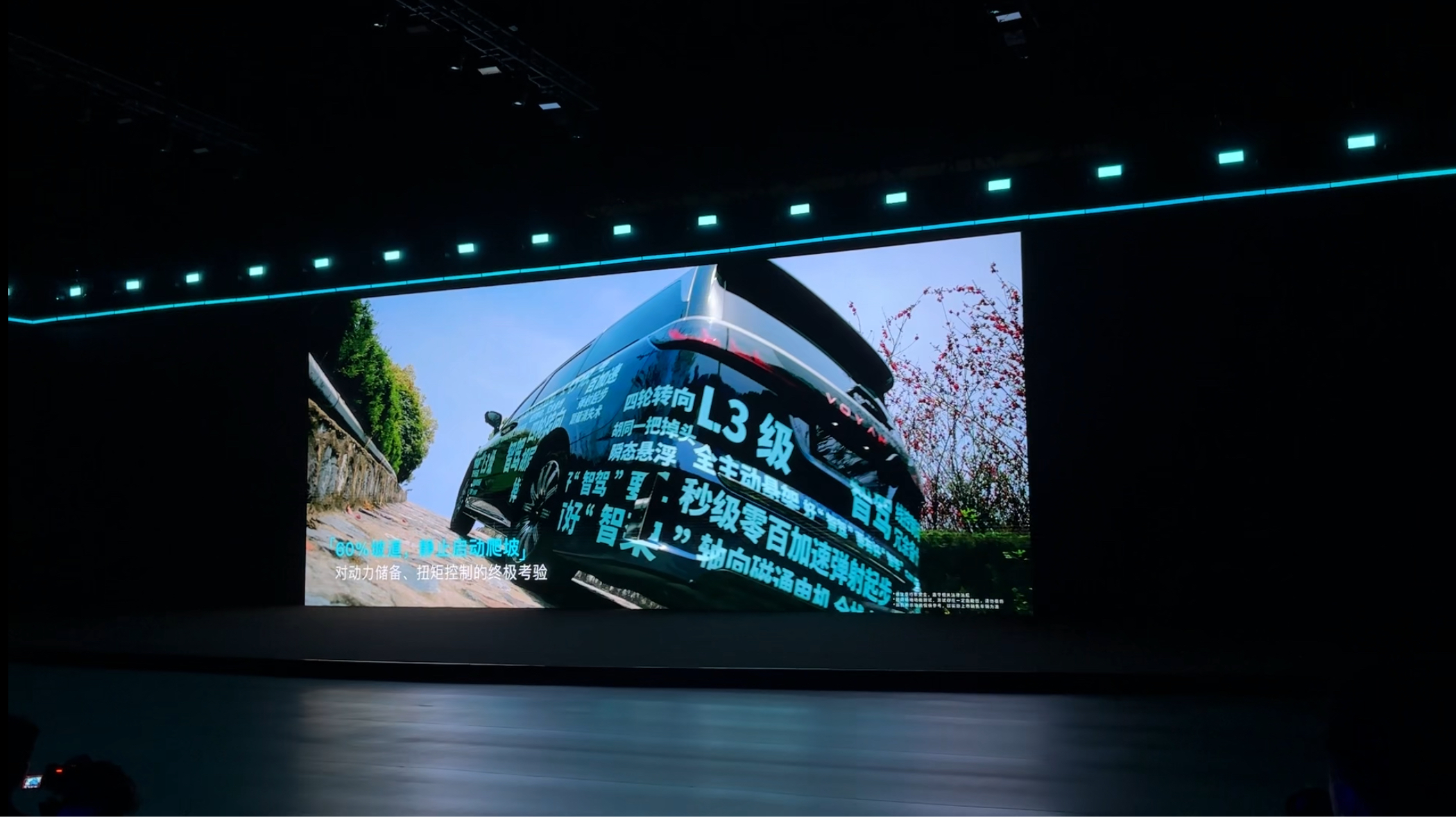 The VOYAH Qingyun platform, with its four-motor setup, can perform in-place steering, similar to what the previously launched U8 and Benz electric G can achieve.
The VOYAH Qingyun platform, with its four-motor setup, can perform in-place steering, similar to what the previously launched U8 and Benz electric G can achieve.
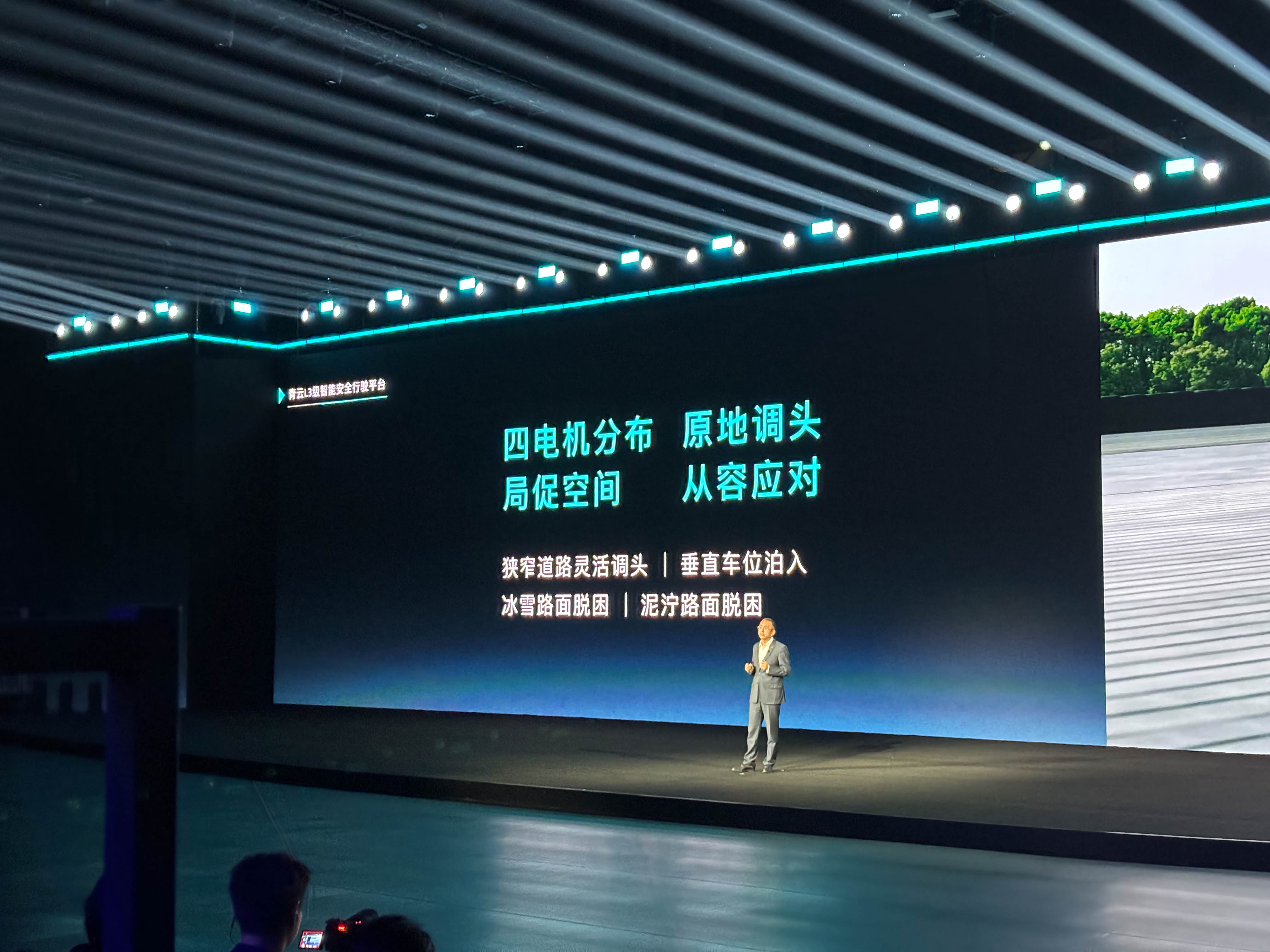
Additionally, rear-wheel steering technology is incorporated into the Qingyun platform, where the rear-wheel steering angle can adapt to ± 5° or ± 10° according to different vehicle sizes. This offers a relatively broad adaptation range, and under this function, the much-anticipated crab mode is also available.
For the safety redundancy of L3 advanced intelligent driving, VOYAH has implemented steer-by-wire and brake-by-wire systems into the vehicle. The logic of steer-by-wire follows that of most competitors; the steering wheel requires fewer rotations yet can control a wide range of front-wheel steering angles.

The advantage of brake-by-wire lies in its response speed, which surpasses that of hydraulic braking, still featuring dual redundancy to meet the highest safety level ASIL-D and fully compliant with L3. Additionally, a minor advantage in terms of maintenance is that it requires almost no upkeep.
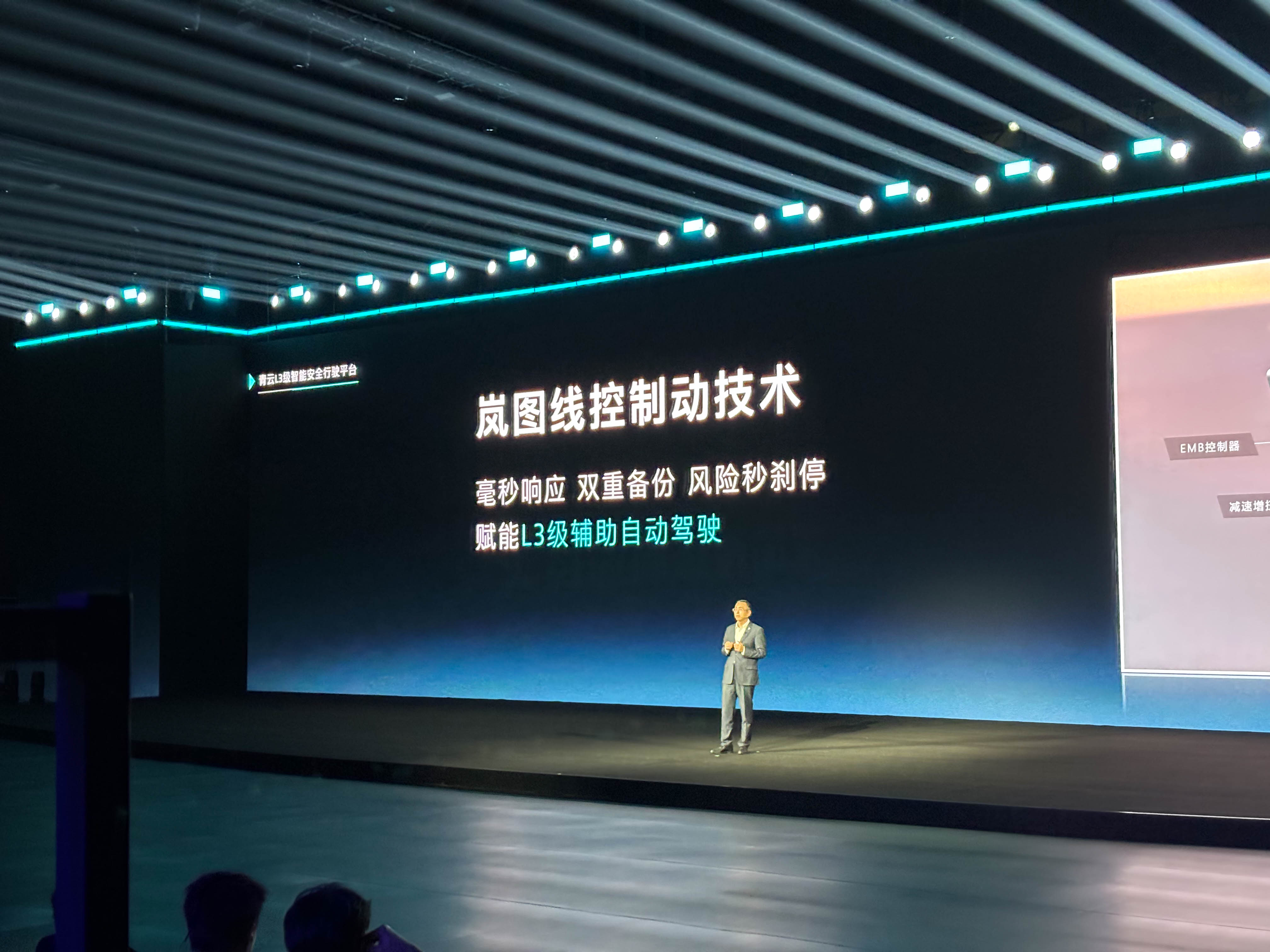
The trending active suspension technology has also been integrated by VOYAH, theoretically enabling it to perform like the Porsche Panamera or U9, with dance-like movements, and achieve the NIO ET9’s on-the-move champagne tower stability. In VOYAH’s scenario, tested during a cornering situation, the vehicle turns left, and instead of tilting right, the active suspension effectively counteracts the tilt with a leaning effect to the left. This complete counteraction of body roll, with possible negative values, is quite counterintuitive but enhances comfort during regular driving.
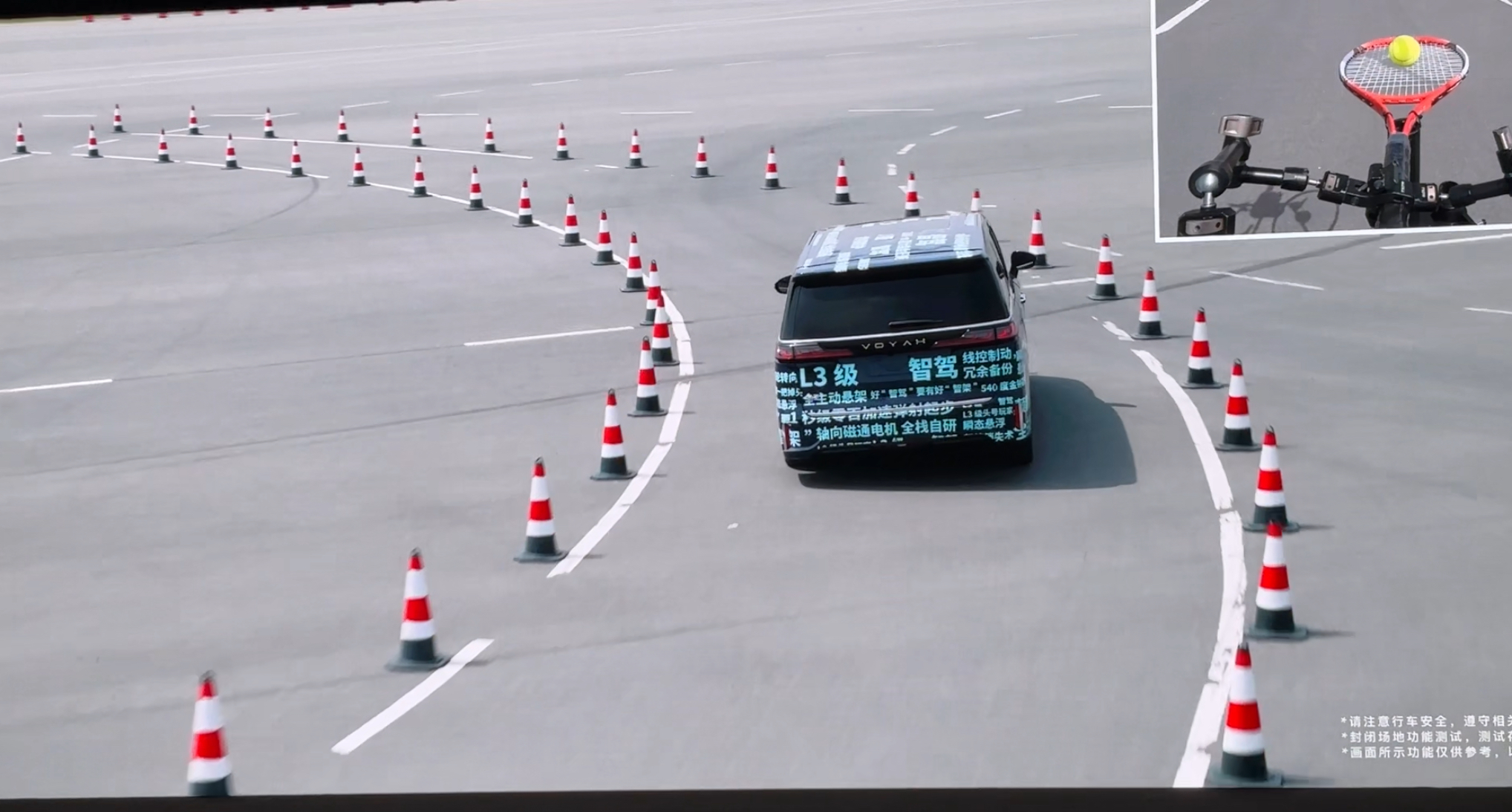

For safety, VOYAH borrowed a technique from FAW Audi. Since the release of this generation of Audi A8 (D5), the active suspension can elevate to shield the vehicle’s strongest point during collisions. VOYAH utilizes a comprehensive sensing system that can monitor collision risks in real-time from the front, rear, sides, and underbody, taking proactive defensive actions. In the face of different collision risks, the vehicle can quickly adjust its body position, fulfilling active and passive safety design roles.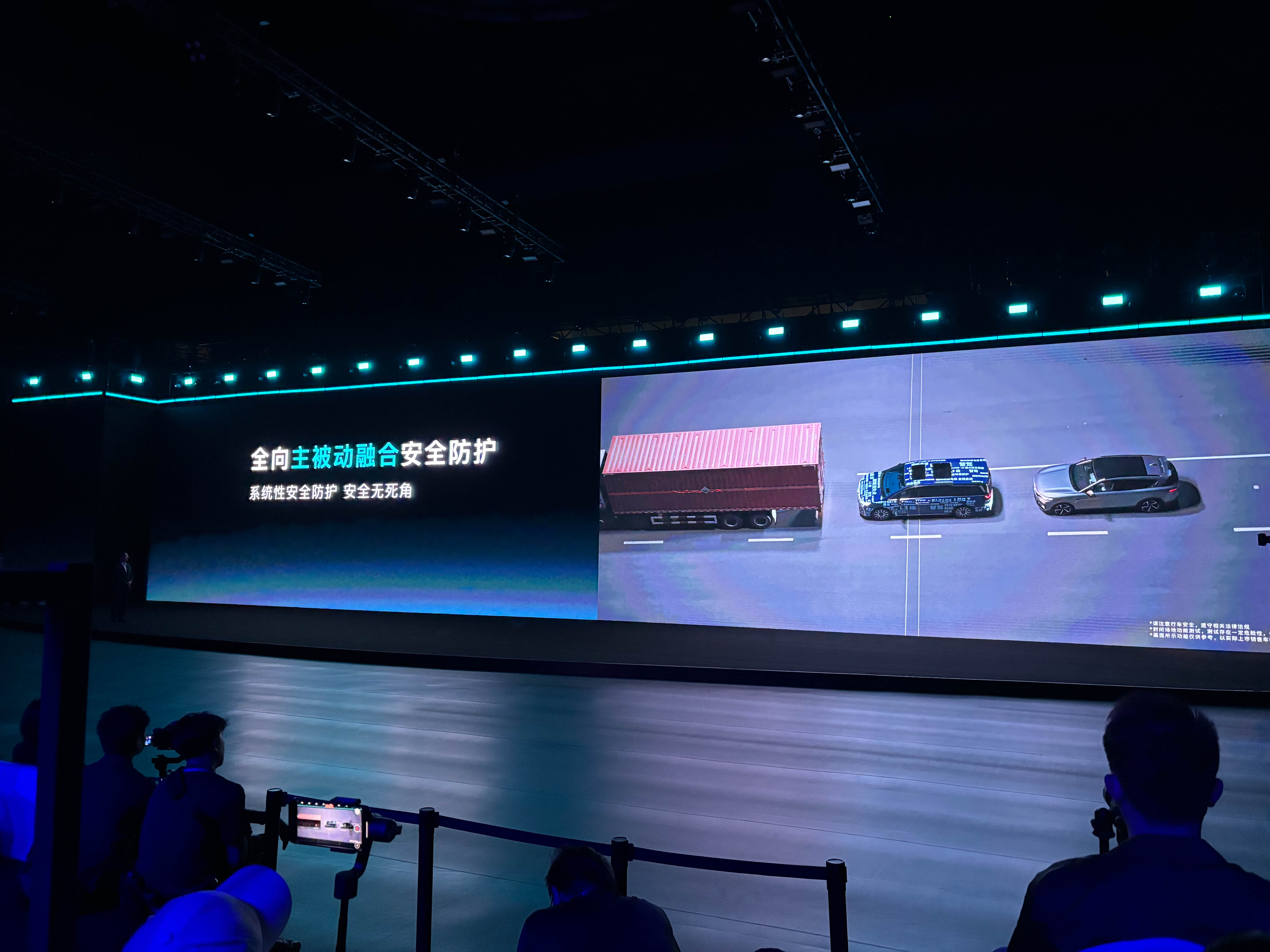
In terms of driving hardware, VOYAH has packed quite a punch on the Qingyun platform. With four axially-flux electric motors, steer-by-wire, rear-wheel steering, brake-by-wire, and active suspension, these features seem to flaunt power, but in VOYAH’s design scenarios, these functionalities provide performance redundancy for L3 safety.
Enhancements in Intelligent Driving Hardware are also Remarkable
According to VOYAH’s product plan, all models this year will be equipped with Huawei ADS L2 advanced driver-assistance systems, from the new VOYAH Dreamer to be unveiled at the Shanghai Auto Show, to the upcoming new FREE, and the subsequent models in planning. In June 2025, VOYAH will also release the intelligent driving insurance. Meanwhile, under the Tianyuan architecture, VOYAH is developing an in-house Kunpeng Intelligent Driving L3 Intelligent Safety Driving System.
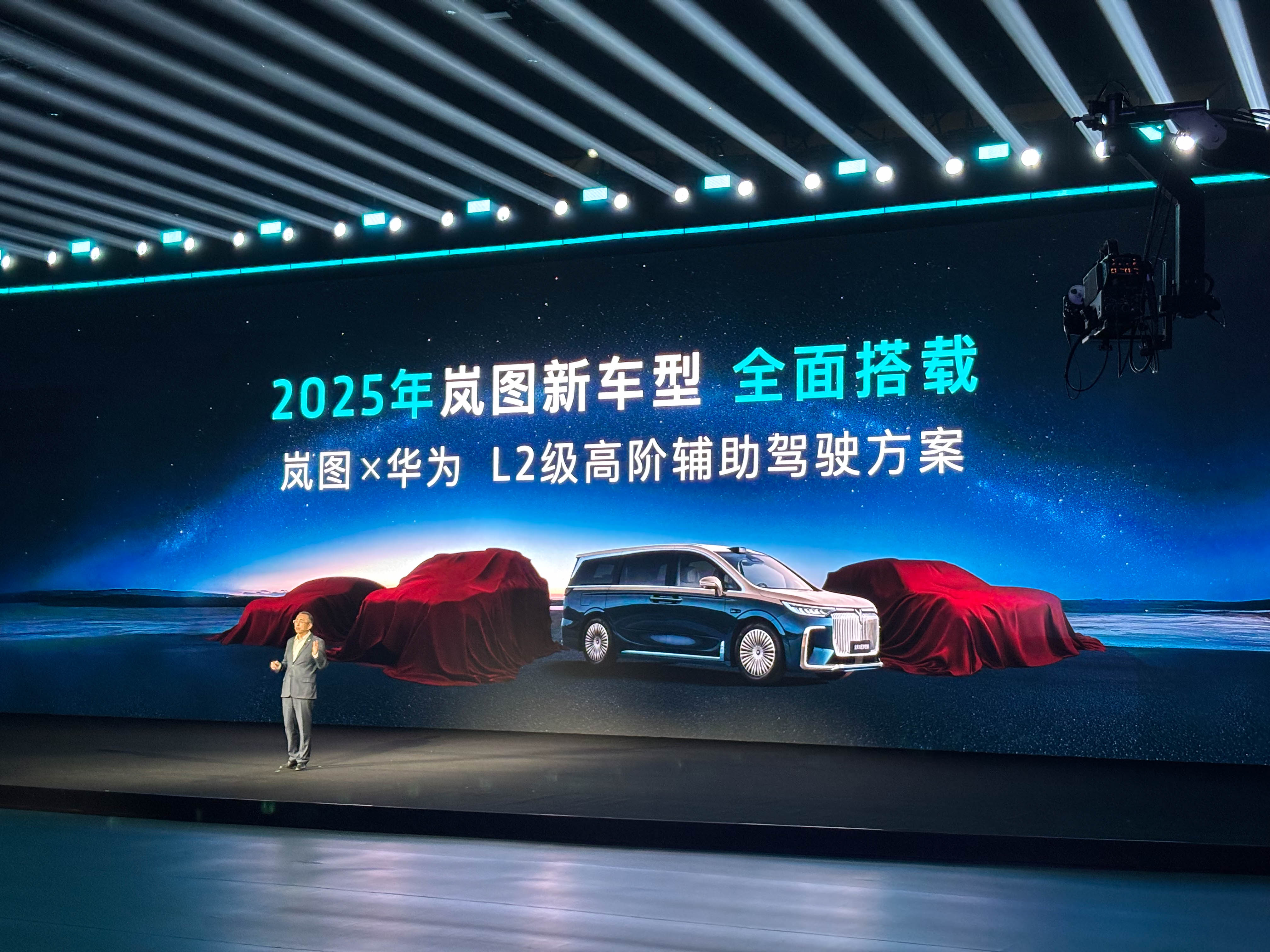
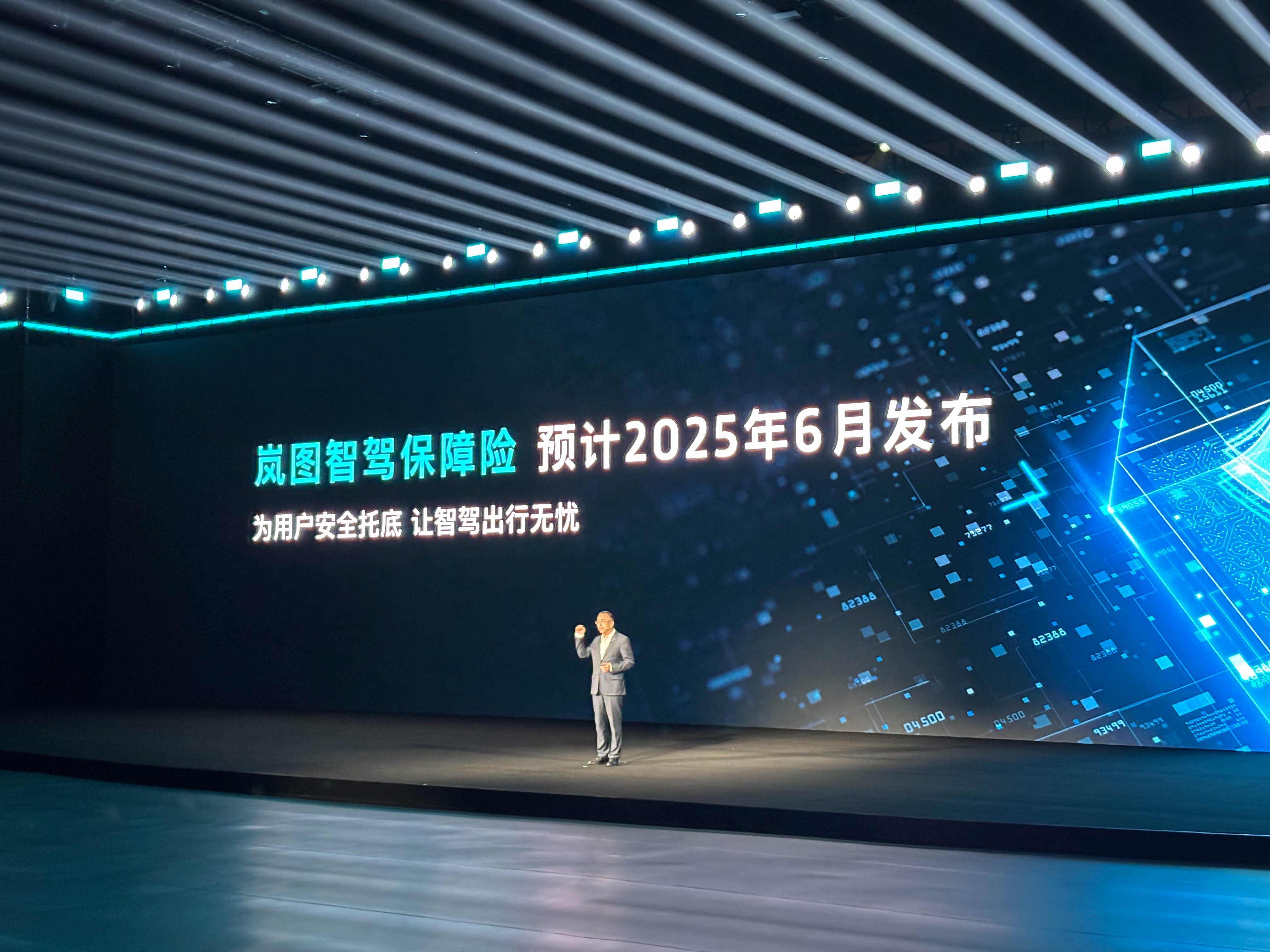
Official claims suggest this system enhances current Huawei ADS active safety with safer identification and higher intelligent driving safety bandwidth. For a 15 cm small object, the L3 intelligent driving technology can recognize it from 100 m away; in terms of AEB braking speed, the technology can stop at 160 km/h.
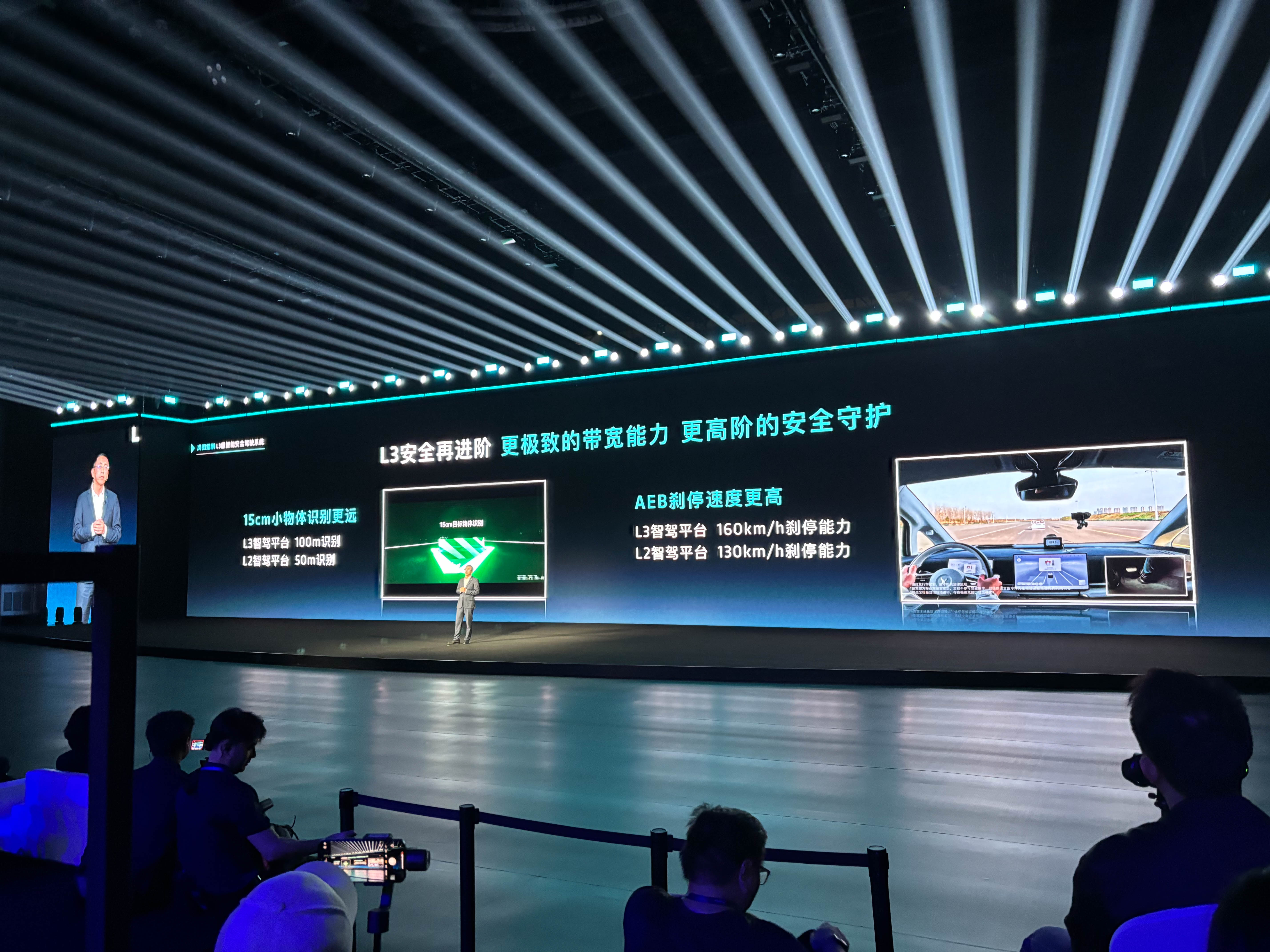
Regarding intelligent driving hardware, VOYAH hasn’t disclosed too much detail at this stage, but it was stated at the release that the lidar has been enhanced, employing a lidar with over 700 lines as the main radar, essentially adding an extra layer of vision compared to most 192-line lidars on the market, allowing for more clarity and accuracy. The vehicle will also feature a total of 48 sensors.
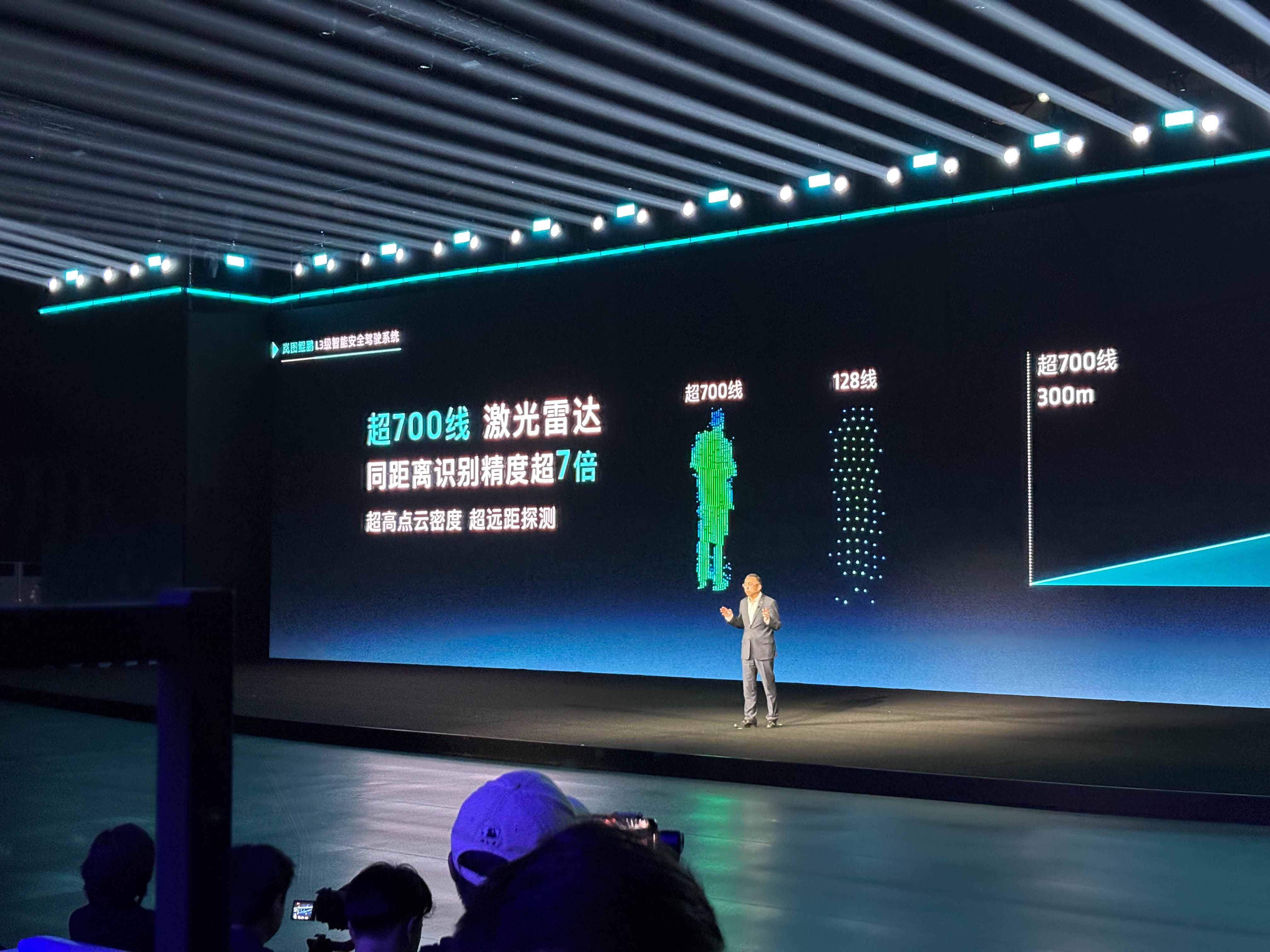
No specific information on the intelligent driving chip has been released, but it has been revealed that it consists of a platform with over 1,000 TOPS computing power from two chips. Therefore, from a comprehensive hardware perspective, VOYAH’s in-house developed L3 intelligent architecture can be said to be armed to the teeth.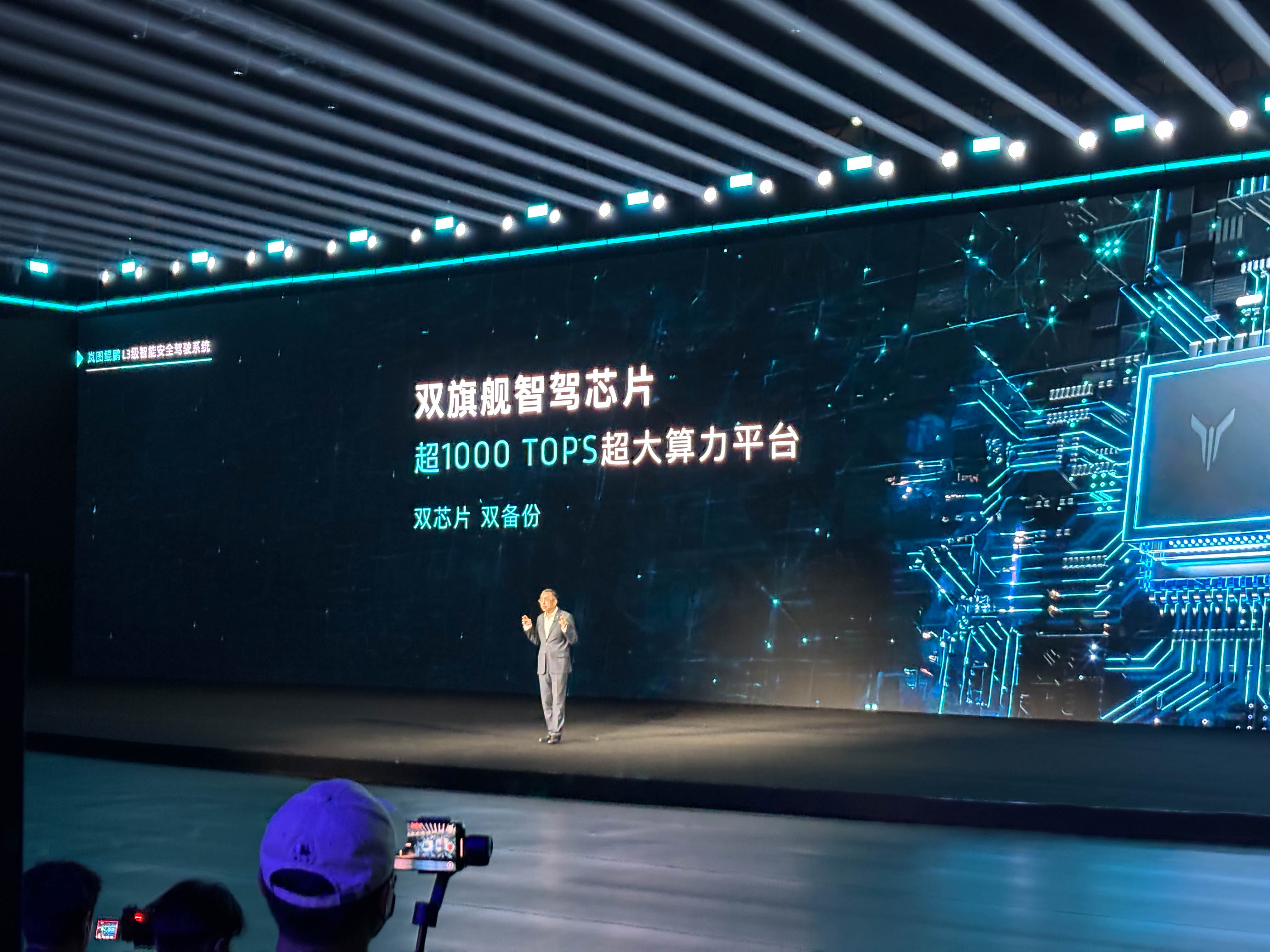
At the end of the conference, VOYAH announced its first L3 intelligent driving capable vehicle, a full-size six-seater SUV, project code-named “Taishan,” positioned as a flagship product and expected to be officially released in 2025.
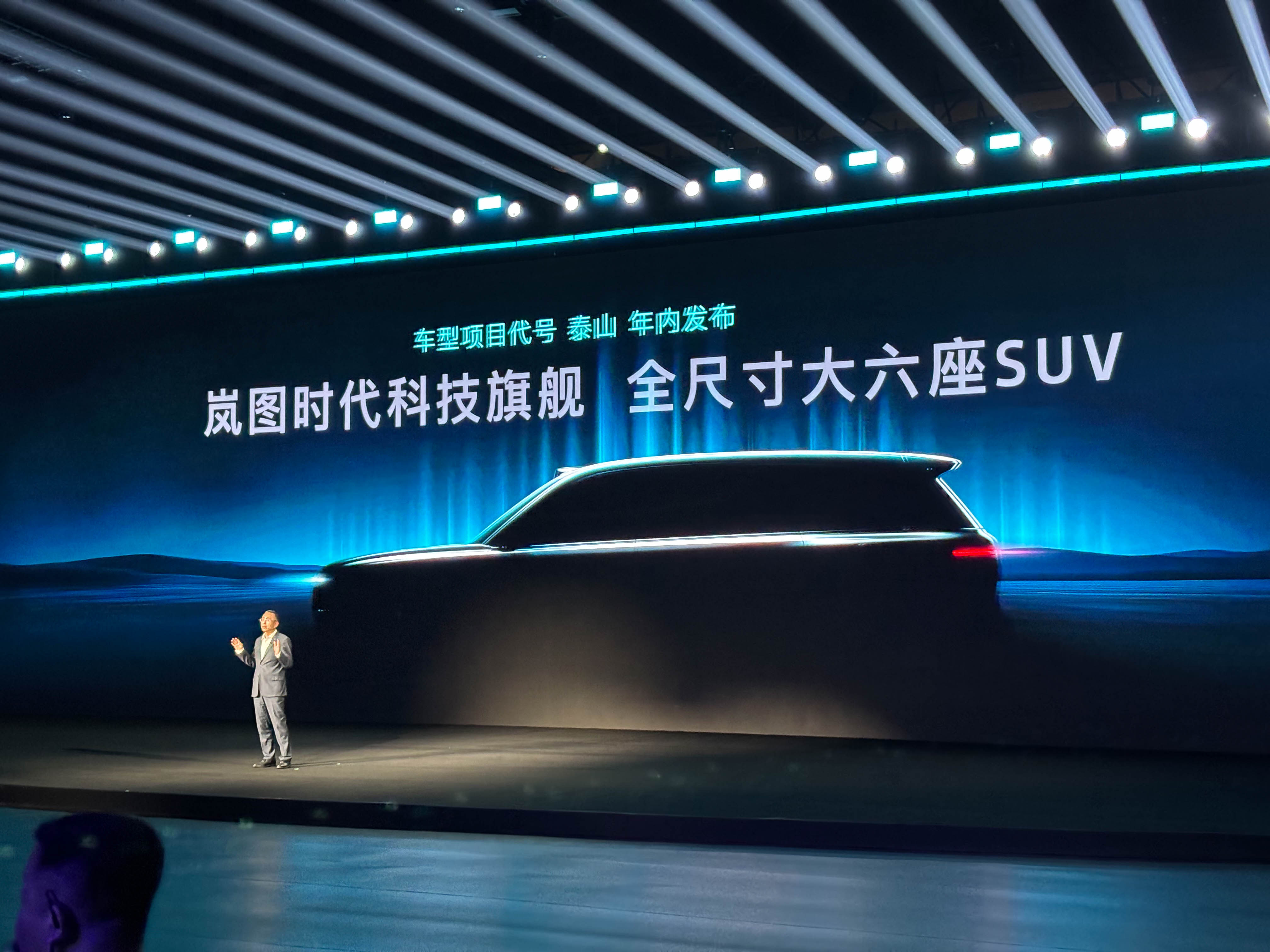
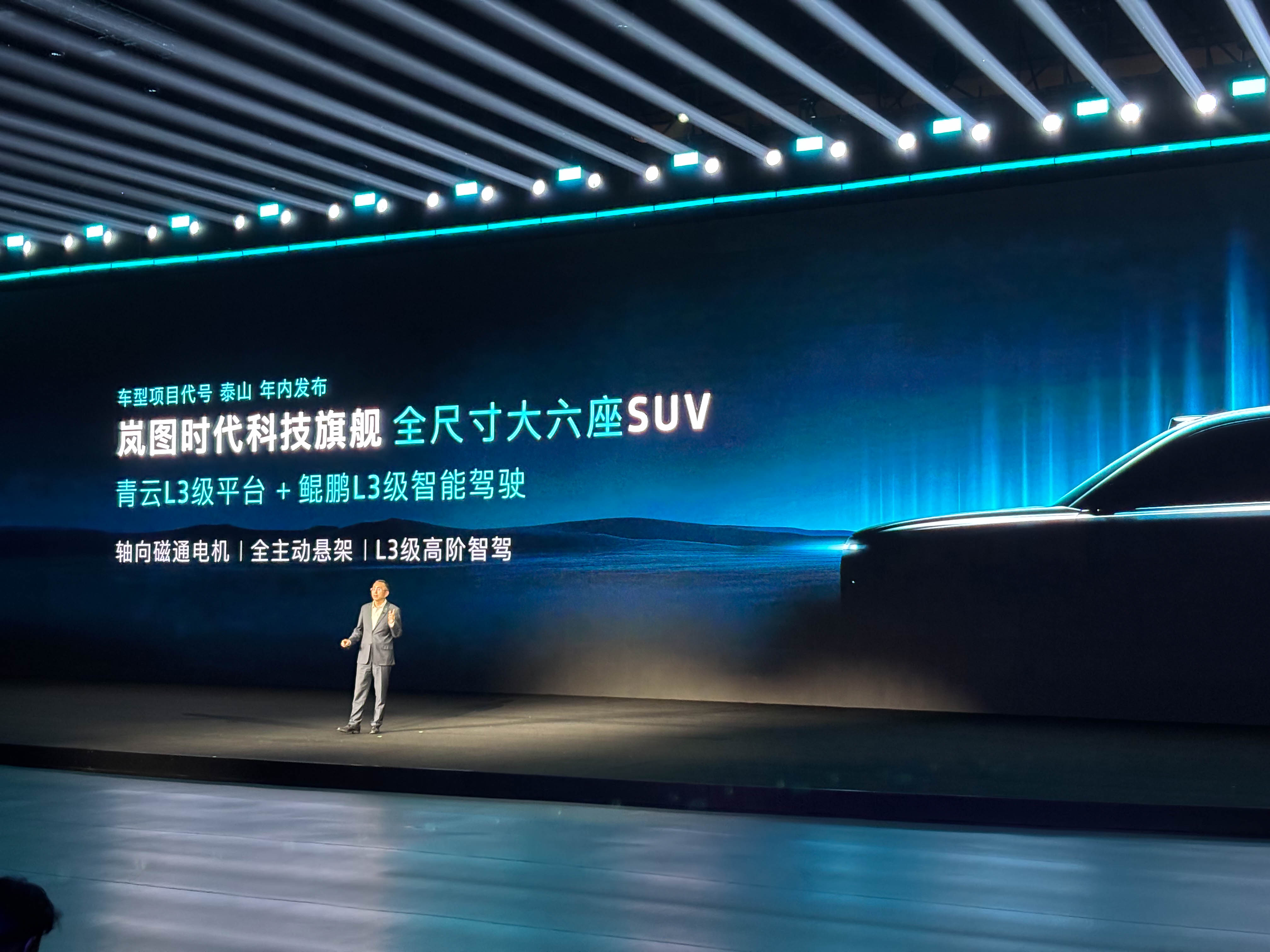
VOYAH Wang Junjun: VOYAH prioritizes safety over showcasing technology
After the conference, we interviewed VOYAH CTO Wang Junjun, VOYAH COO Jiang Tao, and Deputy General Manager of VOYAH Automotive Sales Service Co., Ltd., Zeng Qinglin, to discuss the technical details and product strategy of VOYAH’s upcoming L3 platform. We have summarized the content of this interview.
About the L3 Intelligent Platform
Q: How does VOYAH view the role that the vehicle’s original architecture plays in intelligent driving, and how does VOYAH’s architecture compare to other companies’ architectures in the context of L3 capabilities?
Wang Junjun: L3 involves handing safety over to others, requiring a nearly hundredfold performance improvement in system safety. The fundamental baseline is safety redundancy, enhancing safety by controlling potential scenarios through data.
Q: Besides adaptive suspension, which core technologies has VOYAH mastered, and what advantages does it have over competitors?
Wang Junjun: The risks in mastering technologies are minimal and relatively mature. Cost is our main challenge. VOYAH aims to provide our users with the most advanced technologies for the best response and comfort experience. We focus on safety considerations, such as elevating the vehicle body to resist collisions.
Q: What is your perspective on automotive intelligence development, such as world model technology, and what are VOYAH’s advantages and focal points?
Wang Junjun: VOYAH is progressing on two fronts, collaborating with Huawei and developing in-house. Today, we are focusing more on intelligent driving issues and will promote our in-house intelligent driving solutions this year and next. Regarding world models and large models, they mainly focus on training to improve intelligent driving. Large teams are based in Shanghai, Beijing, and Wuhan. Significant achievements will be evident in the second half of the year with the Dreamer.
Q: In the wake of the XiaoMi incident, people are quite concerned about AEB, though VOYAH claims comprehensive AEB capabilities and scenarios. How does VOYAH interpret AEB?Jun Wang: To enhance safety, AES currently performs quite well, covering all conceivable scenarios, including forward, backward, and lateral situations. On the basis of L2.9, human drivers are required to make the final brake control. However, we strive for the best outcome within our capabilities. For drivers, it’s still necessary to apply the final brake. Once we reach L3 level, the system must provide fallback; it’s not about transferring responsibility directly, but rather increasing the safety margin substantially, with the core focus on safety enhancement to prevent incidents in specific scenarios.
Q: With the upcoming launch of Taishan, where can L3 be utilized, on closed roads or all roads?
Jun Wang: Currently, L3 can’t be fully deployed; L3 now means implementing it on highways.
Q: Does VOYAH’s L3 come from independent development or Huawei?
Jun Wang: VOYAH is indeed collaborating externally, but the independent development is led by VOYAH.
Q: Are there industry standards for L3, and what is the current progress? Has VOYAH participated in setting these standards? If there are no standards, does VOYAH have its own standards? Will there be a national certification standard for L3 in the future?
Jun Wang: L3 has standards under the Road Traffic Safety Law, still yet to be finalized. There are L3 pilots applying for approval, with VOYAH and DF participating. As for standards, no definitive updates yet, primarily due to potential regulatory modifications.
Q: Many companies are proposing L3 concepts or producing L3 vehicles. Recently, ZEEKR announced an L3 platform; Benz and BMW have partially implemented L3 abroad. How does VOYAH differentiate itself in L3 competition?
Jun Wang: The scope for L3 abroad is quite limited, reducing its utility value. VOYAH aims to broaden and enhance the comfort of scenarios.
Q: VOYAH appears to take a multi-faceted approach, collaborating externally to advance smart driving features while investing in independent development. How is the research and development proportion allocated?
Jun Wang: Current vehicle development is based on a collaborative model, although the majority of the efforts are on independent development. We have established sizable R&D teams in Beijing, Shanghai, and Wuhan.
Q: When was VOYAH’s L3 framework set up, and what challenges were encountered during the process?
Jun Wang: VOYAH’s L3 was set up approximately two years ago, over an 18-month period. The main challenges included tackling active suspension and axial flux motor power issues, ensuring technical maturity, performance, and cost viability.
Q: The 700-line LiDAR announced for the L3 platform is quite costly. Will it be used in future models, or will it be replaced by 192-line LiDAR or even lower?
Jun Wang: The L3 platform will utilize high-line LiDAR (700-line LiDAR), with 4 LiDARs in total. Lower-level hardware is not considered for the L3 platform.> Q: Is the development of L2 features from highways, then to urban areas, and finally point-to-point? Does VOYAH believe the widescale adoption of L3 will be incremental coverage or a comprehensive rollout covering all urban and highway areas?
Wang Junjun: Personally, I think the adoption of L3 will be incremental, starting with highways and then moving to urban areas. This is because urban areas are more complex and a lot of work is still needed.
Q: VOYAH’s 2025 full-category smart driving is based on Huawei. How does it compare to in-house developed L3 technology in terms of level?
Wang Junjun: For VOYAH, our priority is to enhance customer experience. Huawei’s current capabilities are relatively good, so we are first providing users with Huawei’s smart driving. Currently, both Huawei and Kunpeng are based on the Tianyuan architecture. While many companies use Huawei’s smart driving technology, we aim to stand out, having advantages in both software and hardware, while collaborating with Huawei.
Q: Is VOYAH launching the L3 platform today because the timing is right, or because the technology is ready?
Wang Junjun: Actually, we started the corresponding development a year ago. It wasn’t due to external factors but rather on VOYAH’s own timeline.
Q: Does VOYAH’s L3 have any secret weapon to gain user trust?
Wang Junjun: The development of L3 is a process, and many regulations are still being discussed by companies. Based on this pace, there will be a detailed follow-up.
About Product Strategy
Q: How do you ensure production safety?
Jiang Tao: Ease of use and safety are key points for VOYAH, encompassing active safety, passive safety, and various other aspects. While developing vehicle features, there are requirements for each subsystem, such as rigidity. Then, there are requirements for components and suppliers to meet standards. It’s a step-by-step breakdown for closed-loop control to ensure production safety.
Q: In extremely dangerous situations or when driver’s skills are lacking, how do you ensure safety?
Wang Junjun: We always prioritize safety. VOYAH vehicles are easy and comfortable to drive. In defining internal safety, within the premise of active safety, we avoid unsafe incidents and behaviors. For example, active suspension functionality considers both comfort and safety. In cases like front or rear collisions, the vehicle body can elevate. Even if a collision occurs, safety, such as a cage-like body, ensures safety. Even if the battery or wiring is damaged, the safety of the occupants’ escape must be guaranteed.
Q: How does VOYAH control costs and maintain competitiveness with the axial flux motor?
Wang Junjun: The current cost of the axial flux motor is indeed high, but we want to share a story. VOYAH’s first vehicle, FREE, was equipped with air suspension early on. Collaborating with Konghui, we overcame technical and cost challenges, offering air suspension in a 300,000 CNY new energy SUV. Subsequently, in the market, air suspension gradually became widespread.In the future, with the arrival of L3, axial flux motors will have advantages such as reducing weight by 150kg and volume by 40%, hence higher efficiency. This represents an excellent solution, additionally allowing space for active suspension layout. If these are widely adopted, costs will significantly decrease, paving the way for a robust industry ecosystem.
Q: Are there any methodologies or experiences from the Dreamer that could be applied to other models?
Jiang Tao: For users, comfort and luxury are the standout features of the new VOYAH Dreamer. For VOYAH, it has established the brand as a high-end new energy entity.
Q: With robots entering the market, does VOYAH have any plans for robots?
Jiang Tao: We are preparing for this. The automotive sector is one of the fastest for robots, and VOYAH is experimenting with this. Quality control equates to intrinsic control, the cockpit to interaction, and driving to movement. The future will see these aspects integrate, akin to humanoid robots. With increasingly complex vehicles and expanded functionalities, using robots for automated testing—like executing commands to automatically check car components, simulating everyday usage—is the future. Additionally, data analysis in the market for fault resolution and automated post-sale inspections will boost overall vehicle quality.
Robot planning is underway, but the complexity of the automotive industry means gradual advancement is necessary.
Q: Does the volume advantage of flux motors allow space for larger batteries, thereby enhancing range?
Wang Junjun: Let’s wait a bit longer; Lu will give everyone a preview soon.
In Conclusion
Currently, national regulations for L3 level driving are not fully established. At VOYAH’s L3 intelligent architecture technology release, the focus was on technological and safety redundancies.
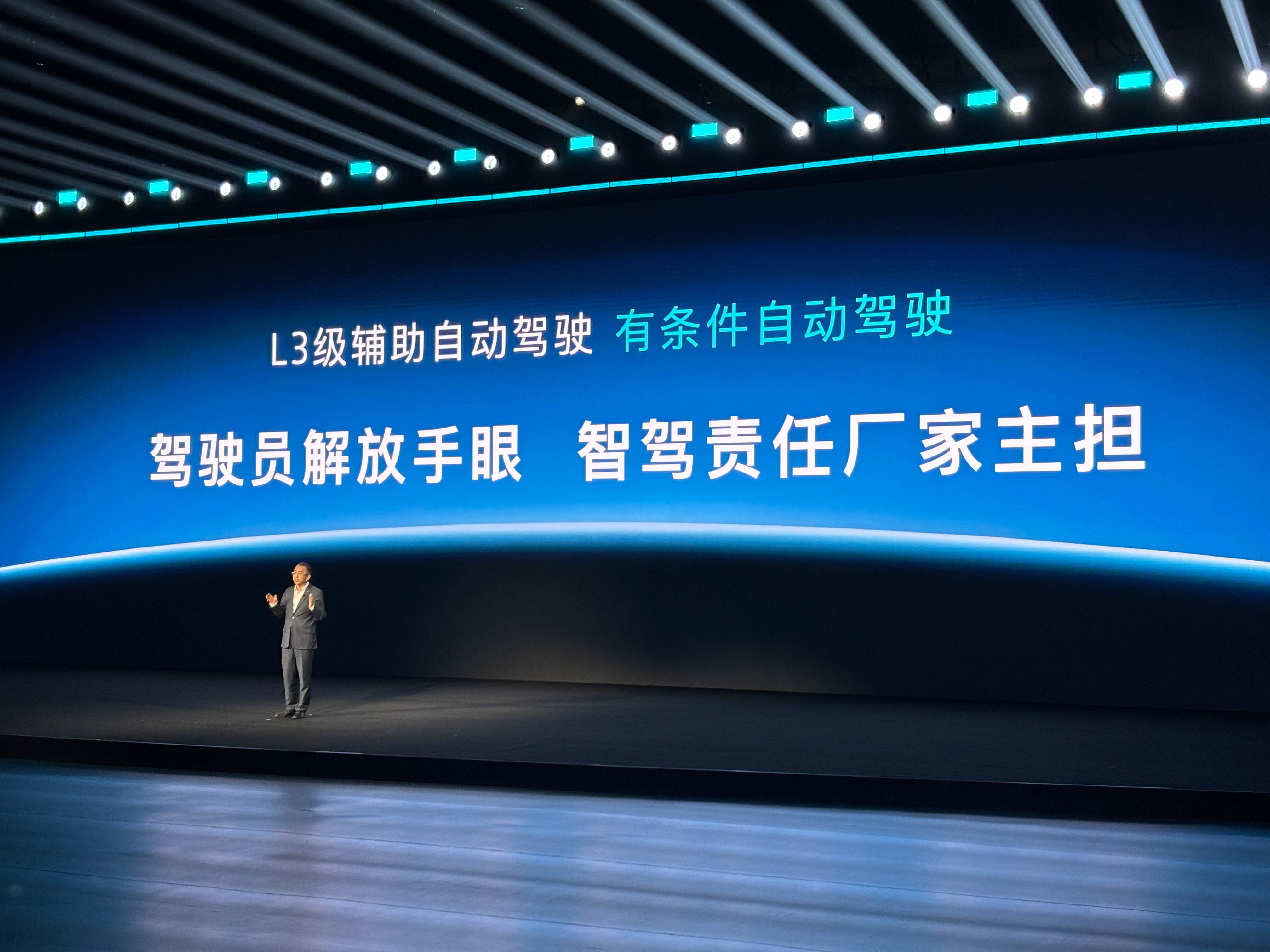
Through leveraging the “national team” status for resource integration and development leadership, VOYAH pushes axial flux motors, active suspension, brake-by-wire, steer-by-wire, rear-wheel steering, over 700-line LiDAR, and chips exceeding 1,000 TOPS computational power onto vehicles. Each technology is among the hottest and most eye-catching, and VOYAH has integrated all these to launch the L3 level driver assistance platform.
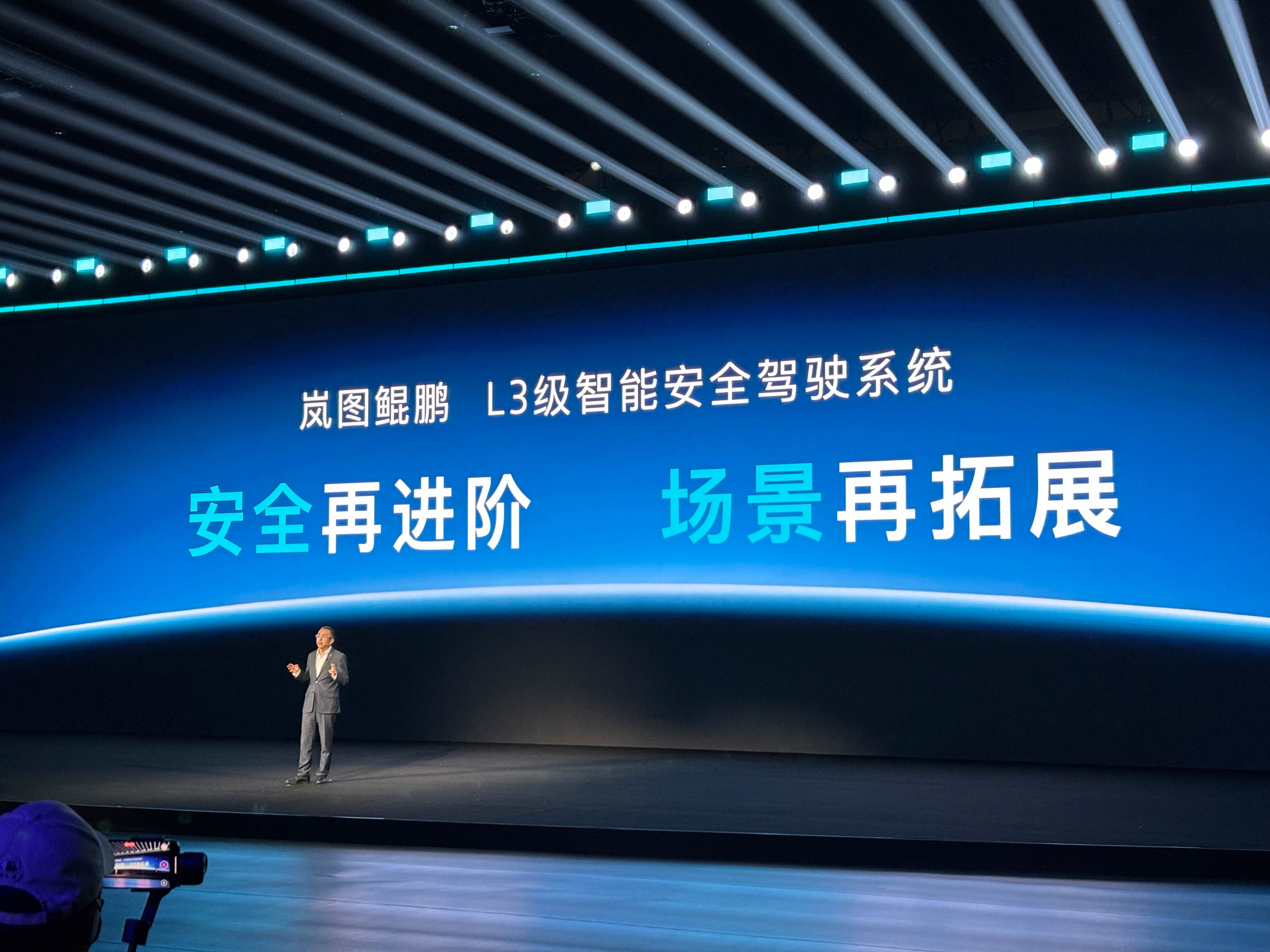
This year, VOYAH will continue its trend of comprehensive updates and iterations of available models, debuting the first intelligent platform product with L3 driving capability——The full-size large six-seater SUV “Taishan” will also meet everyone soon. Therefore, this year, VOYAH, as a national team brand, will no longer remain silent, but instead enhance its competitive edge in the market through both independent research and development, as well as collaborations.
This article is a translation by AI of a Chinese report from 42HOW. If you have any questions about it, please email bd@42how.com.
